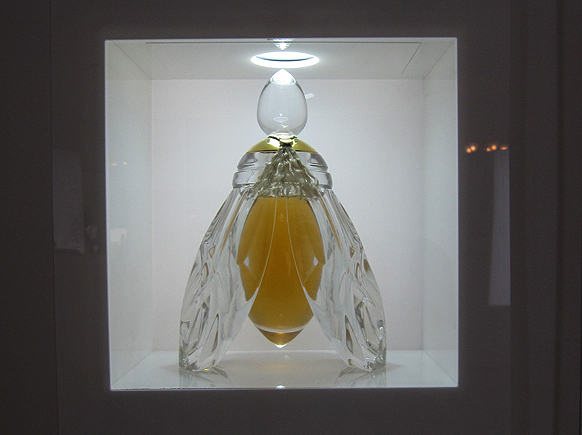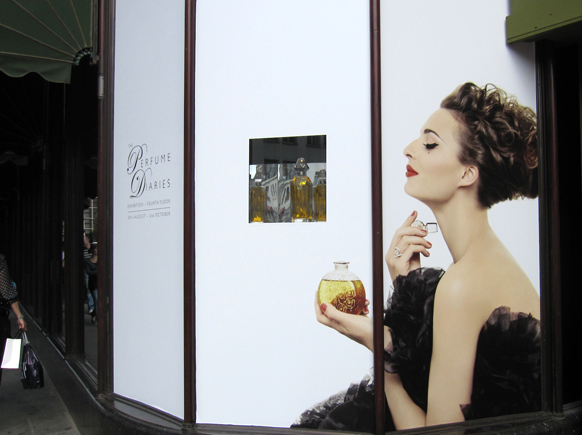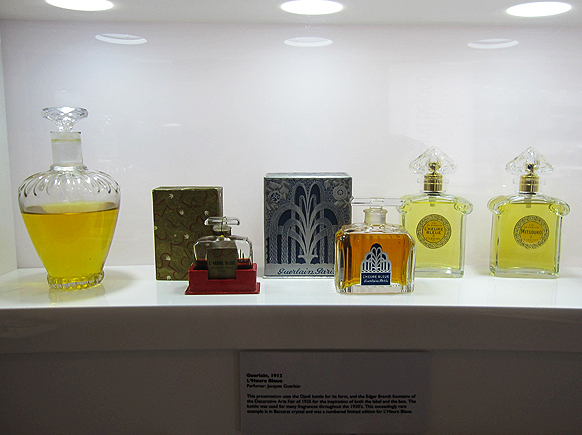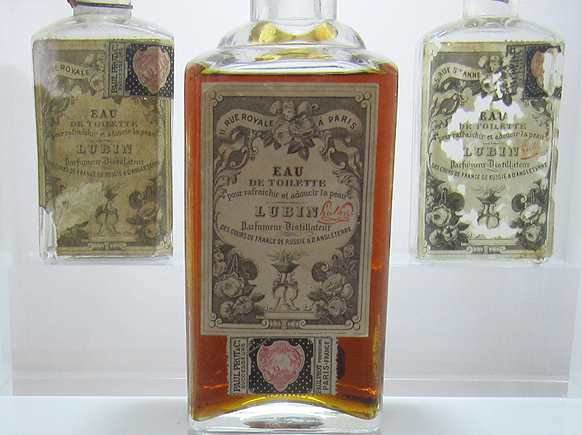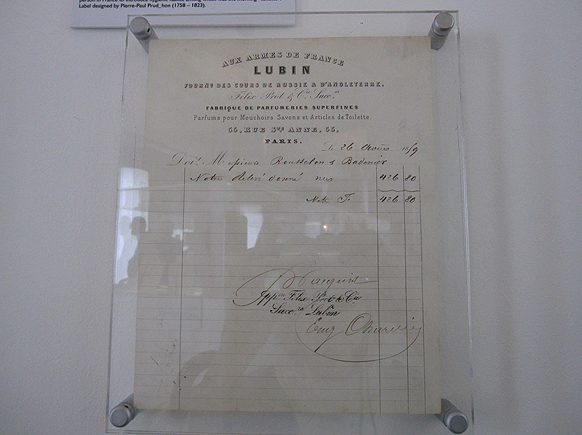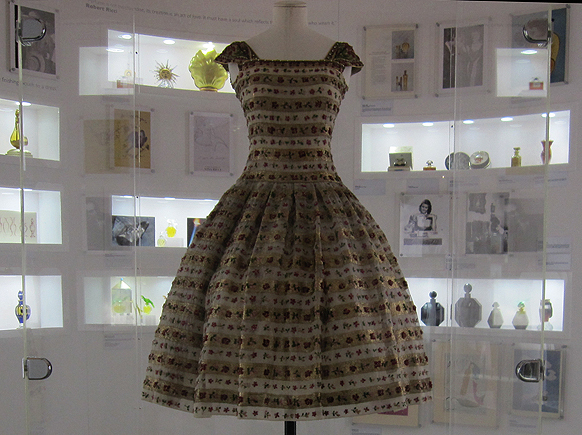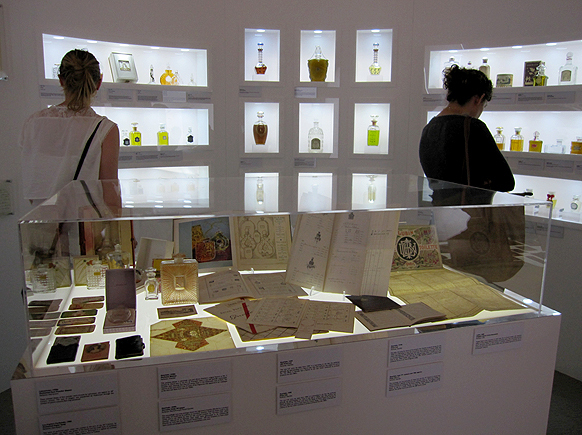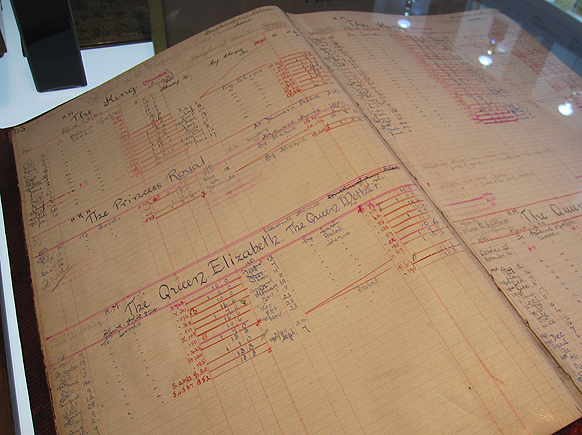Smells like team spirit
Perfume history might seem a natural choice for Harrods, with its acres of cosmetics. But the store’s transition from retail monument to upscale tourist trap makes it hard to imagine they could be showing anything special. Apart, that is, from that incomparable statue in wax of Mohammed Al-Fayed or – even more mind-boggling – its Dodi-and-Di memorial. (Inspiration: Hyde Park’s Peter Pan statue. Execution: a dream couple imagined by Barbara Cartland in the same vein).
The Perfume Diaries, however, held surprising delights. Starting with perfumers in the 18th century, here was enthralling history with ephemera to match. One random instance: the role played by Baccarat in creating a modern market. (More particularly, their hire, after World War I, of sculptor Georges Chevalier who helped partner his firm with both Art Deco and couture).
Another: a chance to sample some of the scents Mademoisellle Chanel and Ernest Beaux checked out for what would become Chanel No 5, in the end 80 ingredients housed by a minimalist bottle. Then, there are the fragrances offered by venerable French jewellers, such as Boucheron and Cartier, meant to enhance (and promote) their sparkling diamonds.
Beautiful bottles, each redolent of their era, are combined with numerous photos, letters, recipes and publicity gambits. The latter vary from posters and ladies’ magazine ads to sagas such as that of Hubert de Givenchy’s L’Interdit. Initially a private gift to his muse Audrey Hepburn, when it went public she became the first-ever “face of perfume”.
So whether you favour Grandmum’s Guerlain or Jean Patou’s Joy (launched to help women “survive” the 1929 Wall Street Crash) or you remain a jeune fille dedicated to Diorissimo, you can’t help but learn a little something. Because one thing this exhibit can boast is characters.
Pierre François Lubin, for example. Born in France in 1774, he served as apprentice to Jean-Louis Fargeon. A Montpellier-born master who developed scents for Marie Antoinette and her court, Fargeon became famous for the Queen’s bespoke, scented gloves. Spiked with a combination of hyacinths, violets, jonquils and carnation, their actual skin was massaged with oil of almonds, eau de rose and white wax before being stored on top of roses sprinkled with nutmeg.
Fargeon escaped the Terror – barely – and made perfumes until he died in 1806. His apprentice Lubin had a Paris boutique from 1798, self-proclaiming himself as ‘Holder of the French Court’s Beauty Secrets’. His scents found favour with les Incroyables and les Merveilleuses (the extreme dressers whose appearance followed the Revolution). But they were later taken up by Empress Josephine, Marie-Therese of Austria (the daughter of Marie Antoinette), England’s George IV and Russian Tsar Alexander I.
The names of such unique artisans have cascaded down the decades and this expo offers a privileged peep at their world. Whether goggling at past notable such as Coty’s La Rose Jacqueminot or sniffing the new “Madonna of the Almonds” from British Royal family favourites Floris, one story is clear. Scent worked well with commercial style early on – and, in that capacity, is still indispensable.


